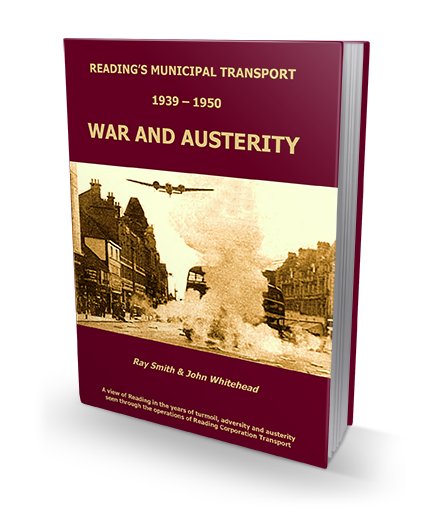
www.buszone.co.uk
May 2014
< Last Month | News Archive | Next Month >
Reading’s Municipal Transport 1939-1950: War & Austerity
14-05-14
Reading’s municipal transport undertaking has been part of Reading’s townscape and a vital part of its life for more than a century. This new book documents its history during the Second World War and the years of austerity following, vividly recounting the difficulties of operating a provincial bus fleet in the face of wartime shortages yet with increasing passenger demand and under the ever-present threat of air raids. Rising post-war demand for its services then stretched the undertaking further in those early years of peace. The book thus offers a unique insight into the operation of a municipal bus fleet in a medium-sized provincial county town.
The account has been set into the wider national and social context, being deliberately told alongside the social history of the day – and is surely much richer for being told thus, the pressures of war and subsequent austerity affecting every aspect of life. The text has been supplemented by a wealth of contemporary photographs, many not ordinarily available in the public domain.
Reading had said a final goodbye to its trams and replaced them with trolleybuses only six months before war was declared, so It was fortunate that these electric vehicles, which comprised over a third of the fleet, could shield the town from the full force of compulsory petrol and diesel rationing. Fortunately, Reading did not suffer the destruction suffered by other British towns and cities. Designated a ‘Safe Town’, the population rose progressively with an influx of evacuees and a number of military establishments and businesses looking for a safer haven, all of which obviously had clear implications for the Transport Department – nearly 20 million passengers had been carried in 1938 but nearly 41˝ million in 1945, and all achieved with only six extra trolleybuses, while four new motorbuses merely replaced four which were hopelessly obsolete. Evacuation buses, factory specials, and late night munitions specials all add to the story. There followed the years of austerity, with a continued high demand for bus travel, further stretching the undertaking as the town expanded.
This is a book aimed at the local historian as well as omnibologists but it will also offer much of interest to other social historians about the impact of war on the infrastructure and patterns of daily living. Of course, it will re-awaken memories in those who lived through those times but it also particularly stands as a tribute to those who kept Reading Corporation buses and trolleybuses moving during the war and in subsequent years.
For more information, and to order a copy, please visit www.MillanePublishing.com.
< Last Month | News Archive | Next Month >
